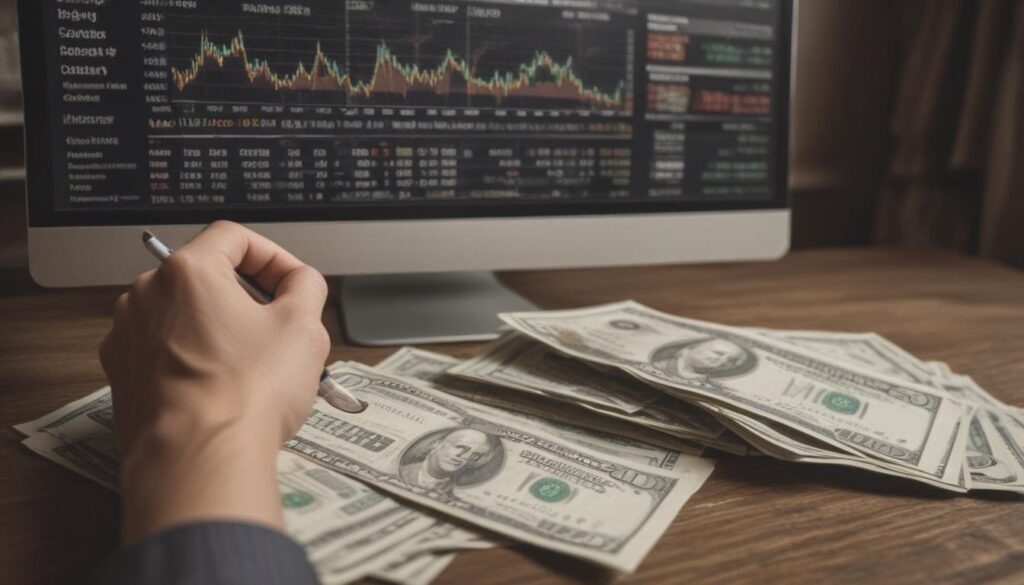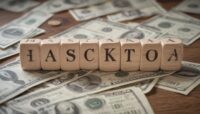Now Reading: Dividends Explained How to Earn From Stocks
- 01
Dividends Explained How to Earn From Stocks
Dividends Explained How to Earn From Stocks

Understanding Dividends Your Guide to Earning Income from Stocks
Does the idea of investing in the stock market feel overwhelming? You hear stories of people making fortunes, but the process of timing the market—buying low and selling high—seems more like a high-stakes guessing game than a reliable strategy for building wealth. You want to make your money work for you, but the perceived complexity and risk are holding you back from taking the first step.
There is a more straightforward and stable path to earning money from stocks, one that doesn’t rely on frantic trading. This method allows you to generate a regular stream of income simply by owning a piece of a successful company. This powerful tool is called a dividend. Think of it as your reward for being a loyal part-owner of a business. This guide will demystify the world of dividends, showing you how they can transform from a confusing financial term into a cornerstone of your passive income strategy.
What Exactly Is a Dividend
A dividend is a direct payment made by a company to its shareholders. In the simplest terms, it is a portion of the company’s profits that is distributed to the people who own its stock. When a company earns more money than it needs to reinvest back into its operations, it can choose to share that excess profit with its owners. This serves as a tangible reward for investing in the company and holding onto its shares.
Mature, stable companies with consistent profits are the most common payers of dividends. Think of established names in industries like utilities, consumer goods, or banking. These companies have often moved past their rapid growth phase and generate predictable cash flow. Instead of needing every dollar to fund expansion, they can afford to return value directly to their investors. This is a strong signal of financial health and corporate confidence, making dividend-paying stocks particularly attractive to investors seeking income and stability over speculative growth.
How Dividends Work in Practice
The process of receiving a dividend is governed by a few key dates that are important for investors to understand. To be eligible for the payment, you must own the stock before a specific cut-off point.
Key Dividend Dates
First is the Declaration Date, which is when the company’s board of directors announces that a dividend will be paid. They will also specify the Record Date, which is the day you must be officially listed as a shareholder to receive the payment. To ensure all trades are settled, there is an Ex-Dividend Date, which is typically one business day before the Record Date. You must own the stock before the ex-dividend date to be eligible for the upcoming dividend.
Finally, the Payment Date is when the cash is actually deposited into your brokerage account. For example, if a company declares a dividend of $0.50 per share and you own 200 shares before the ex-dividend date, you will receive a cash payment of $100 on the payment date. These payments are typically made on a quarterly basis, providing a regular and predictable income stream throughout the year for long-term investors.

Finding and Evaluating Dividend Stocks
When you begin searching for dividend stocks, it’s tempting to simply look for the highest dividend yield. While yield is an important metric, a smarter approach involves looking for quality and sustainability.
The Trap of Chasing High Yields
The dividend yield is a simple calculation that shows you the annual dividend payment as a percentage of the stock’s current price. While this is a useful metric, chasing the highest yield can be a trap. An unusually high yield might be a red flag, signaling that the market believes the company is in trouble and the stock price has fallen, or that the dividend itself is unsustainable and may be cut soon.
Look for Quality and Consistency
A better strategy is to look for companies with a long, uninterrupted history of paying and, more importantly, increasing their dividends year after year. These companies are often called “Dividend Aristocrats” or “Dividend Kings” and have proven their ability to thrive through various economic cycles. You should also look at the company’s payout ratio, which tells you what percentage of its earnings is being used to pay the dividend. A healthy, sustainable ratio gives you confidence that the company can continue to reward its shareholders well into the future.
The Power of Reinvesting Dividends
Receiving dividend cash is great, but unlocking their true wealth-building potential comes from reinvesting them. Most brokerage platforms allow you to enroll in a Dividend Reinvestment Plan (DRIP), which automatically uses your dividend payments to purchase more shares of the same stock, often without any commission fees. Instead of a small cash deposit, your ownership stake in the company grows a little larger each quarter.
This process unleashes the power of compounding. The new shares you purchase with your dividends will, in turn, start earning their own dividends. This creates a snowball effect that can dramatically accelerate the growth of your investment over the long term. What starts as a small stream of income gradually grows, buying more and more shares, which generate even more income. This patient, automated strategy is one of the most effective and time-tested methods for building substantial wealth in the stock market, transforming your initial investment into a much larger asset over time.





































